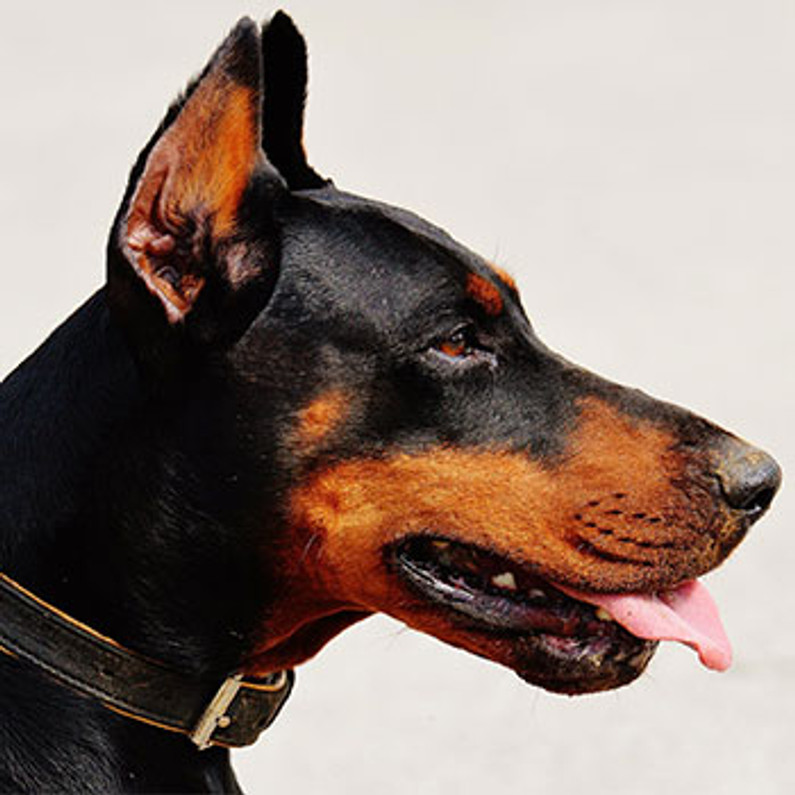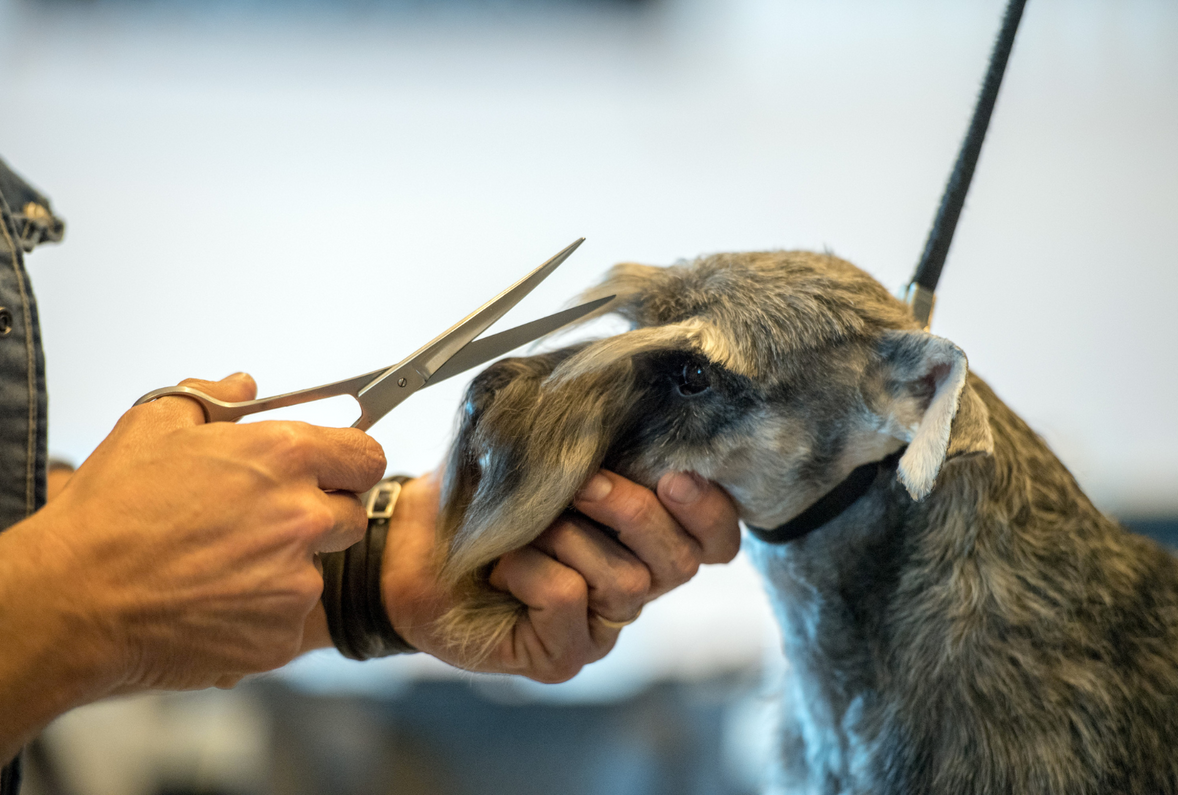Doberman Pinscher
Doberman Pinschers are the result of a combination of several breeds by Karl Friedrich Louis Dobermann in the late 1800’s. While the exact breeds are lost to history, it is generally accepted that the Black and Tan Manchester Terrier, English Greyhound, Weimaraner, German Pinscher and the now extinct old German Shepherd were involved in the mix. Early Doberman’s more closely resembled Rottweilers than today’s sleek Doberman.
While the correct name in America is still the Doberman Pinscher, in Germany and Britain the breed is known simply as the Doberman. Pinscher, the German word for Terrier, was dropped from the breed’s name when it was determined that, even though Dobies received many positive characteristics from the terrier, it was no longer appropriate for the breed.
In 1908 the Doberman was recognized by the American Kennel Club and, after a few slow years, began a steady rise in popularity. When the Doberman Pinscher Club of America was formed by George Earle III in 1921, there were less than 100 Dobies registered by the AKC. In 1934 more than 1,000 were registered. Today, the Doberman Pinscher is ranked 15th in AKC dog registration for 2009.
The Doberman was born for police and military work. Courageous, loyal and intelligent, the Doberman is a reliable military dog, police dog, war dog and guard dog. In WWII, many brave Dobermans fought side by side with American soldiers.
The traditional silhouette of the Doberman with cropped ears and docked tail was dictated by their use as guardians and protectors. A long tail and floppy ears offer more places for an attacker to grab hold and inflict damage.
The media has deluged us with images of the Doberman as a vicious attack dog and he is certainly a capable fighting machine. Lean and flexible, he presents a frightening image when charging his prey. In truth, breeders are producing a dog with a slightly different temperament than in the past. Even so, a Doberman is a strong, intelligent breed which requires a strong, intelligent owner. This breed is not for everyone. If you are considering a Doberman puppy, read everything you can get your hands on, contact breeders and Doberman Fanciers, and attend dog shows. A Doberman who has an owner who is willing to accept the alpha dog position, train consistently and kindly, set (and keep) boundaries, and try with all their heart to be the person their dog thinks they are – is a lucky dog indeed!
While it is true that a Doberman needs a strong owner in order to be well balanced, the Doberman is, at his core, a family dog. This breed should not be left outside or isolated, the home and his family are where the breed thrives. Dobies are “Velcro dogs”. They will follow their people seeking love and attention and want nothing more than to be loved – after they have been properly exercised of course!
The Doberman Pinscher is a high energy breed and needs regular exercise and mental stimulation to be a well balanced dog. This dog loves to run and jump and a fenced yard is a basic requirement. Daily walks, runs or jogs, playtime on agility equipment, catch or Frisbee are all activities that your Doberman may enjoy.
What activities do Doberman’s excel at? The better question would be what activities don’t they? According to the Doberman Pinscher Club of America, this athletic dog is successful in Agility, Herding, Obedience, Rally, Search and Rescue, Tracking and can be a Cart/Draft dog. We already know that the Doberman makes an excellent Police Dog and Military dog but he also is a dependable Service dog. Schutzhund measures a dog’s “mental stability, endurance, structural efficiencies, ability to scent, willingness to work, courage and trainability”. With that list of requirements it is no surprise that Dobermans are well suited to obtain Schutzhund titles.
Health concerns for a Doberman are Cardiomyopathy – a suspected inherited enlargement of the heart, Hip Dysplasia – an inherited condition which is common in larger breeds, Hypothyroidism – and easily treated condition in which the gland does not produce enough hormone, von Willebrands Disease – a bleeding disorder, and Wobblers Syndrome – a skeletal abnormality which causes paralysis. Because some of the preceding ailments are inherited, it is imperative that the breeding stock of any puppy you are considering be free of them. A responsible breeder will strive to breed healthy puppies with sound temperament. Sites such as the Canine Health Foundation (CHF), Orthopedic Foundation for Animals (OFA) and Canine Health Information Center (CHIC) offer valuable information for potential dog owners.
The Doberman Pinscher Club of America is full of information on the breed and is a wonderful place to start your education into this versatile breed.
Looking for gifts, apparel and jewelry featuring the Doberman Pinscher? Visit Cherrybrook.com and select the Shop by Breed tab to view our full selection of Doberman Pinscher gifts.
Recent Posts
-
Spring Into Action: Fun Exercise Ideas for Your Canine Companion
Spring Into Action: Fun Exercise Ideas for Your Canine Companion As the winter chill melts away …Mar 26th 2024 -
Understanding Dog Grooming Shears: Cutting Through the Noise
Understanding Dog Grooming Shears: Cutting Through the NoiseDog grooming, or in particular trimming, …Feb 5th 2024 -
Choosing the Perfect Bed for Your Dog: A Guide to all Types of Dog Beds
Types of Dog Beds: Choosing the Perfect Bed for Your DogEvery dog owner knows that a comfortable pla …Jan 26th 2024




